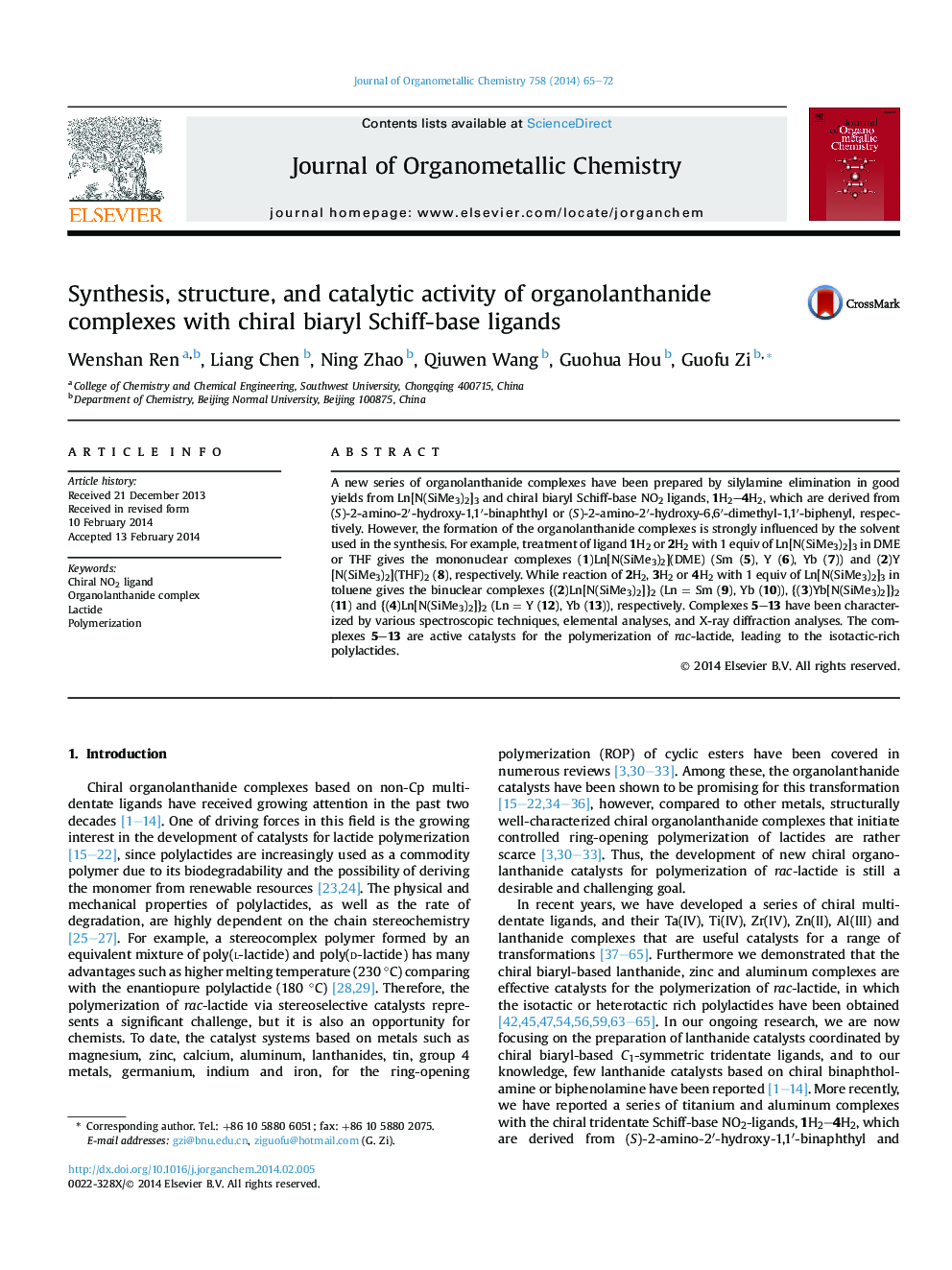| Article ID | Journal | Published Year | Pages | File Type |
|---|---|---|---|---|
| 1321153 | Journal of Organometallic Chemistry | 2014 | 8 Pages |
•A new series of chiral organolanthanide complexes have been reported.•Solvent has effect on the formation of the organolanthanide complexes.•They are active catalysts for the polymerization of rac-lactide.
A new series of organolanthanide complexes have been prepared by silylamine elimination in good yields from Ln[N(SiMe3)2]3 and chiral biaryl Schiff-base NO2 ligands, 1H2–4H2, which are derived from (S)-2-amino-2′-hydroxy-1,1′-binaphthyl or (S)-2-amino-2′-hydroxy-6,6′-dimethyl-1,1′-biphenyl, respectively. However, the formation of the organolanthanide complexes is strongly influenced by the solvent used in the synthesis. For example, treatment of ligand 1H2 or 2H2 with 1 equiv of Ln[N(SiMe3)2]3 in DME or THF gives the mononuclear complexes (1)Ln[N(SiMe3)2](DME) (Sm (5), Y (6), Yb (7)) and (2)Y[N(SiMe3)2](THF)2 (8), respectively. While reaction of 2H2, 3H2 or 4H2 with 1 equiv of Ln[N(SiMe3)2]3 in toluene gives the binuclear complexes {(2)Ln[N(SiMe3)2]}2 (Ln = Sm (9), Yb (10)), {(3)Yb[N(SiMe3)2]}2 (11) and {(4)Ln[N(SiMe3)2]}2 (Ln = Y (12), Yb (13)), respectively. Complexes 5–13 have been characterized by various spectroscopic techniques, elemental analyses, and X-ray diffraction analyses. The complexes 5–13 are active catalysts for the polymerization of rac-lactide, leading to the isotactic-rich polylactides.
Graphical abstractA new series of organolanthanide complexes have been prepared from chiral biaryl Schiff-base NO2 ligands. The organolanthanide complexes are active catalysts for the polymerization of rac-lactide, leading to the isotactic-rich polylactides.Figure optionsDownload full-size imageDownload as PowerPoint slide
